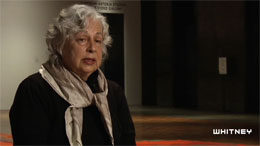
Lynda Benglis – Contraband (2008, 26 MB, 2:20 min)
Artist Lynda Benglis discusses the process of creating Contraband
by pigmenting rubber latex and pouring it on the floor of her studio.
First recognized for

Lynda Benglis – Contraband (2008, 26 MB, 2:20 min)
Artist Lynda Benglis discusses the process of creating Contraband
by pigmenting rubber latex and pouring it on the floor of her studio.
First recognized for
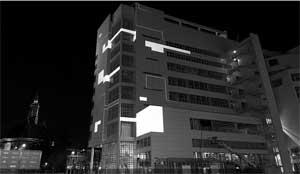
Interview with Pablo Valbuena (2009, 43 MB, 3:46 min)
Studio Banana TV interviews visual artist and architect Pablo Valbuena.
After working in digital media designing virtual architectures for videogames,
he currently looks for new ways of using light to introduce the dimensions of
time and movement in urban spaces, altering the perception of physical space
through projected virtual realities.
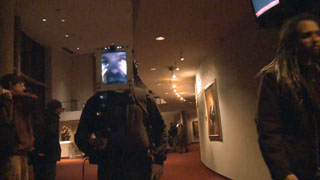
Monster/Identity Prosthetic (2009, 54 MB, 1:13 min)
Documentation from last years Spark Festival of a rather splendid
installation by Todd Polenberg.
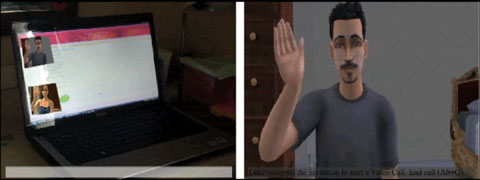
Ashleigh Smith – Impossible Conversations (2010, 75 MB, 2:30 min)
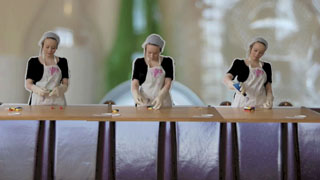
Emma Haggis – Out of Sight, Out of Mind (2010, 118 MB, 2:18 min)

Lucy Mills – Response (2010, 108 MB, 2:02 min, silent)
So, first, I should say, Writtle is where I taught this year, but it cuts both ways:
I wouldn’t post these pieces by graduating students here on DVblog unless I
thought they were all great, which I do.
They’re also diverse, in a fascinating way.
There’s Ashleigh Smith’s haunting – stays with you long afterwards – game/real life hybrid,
Lucy Mills beauty industry critique – half mash-up, half rather brave performance,
(It’s interesting the way that all three pieces incorporate, to
some degree, elements of self performance) and Emma Haggis’s superbly made
and utterly captivating stop motion environmental piece.
In each case one can see a personal language well into its development.
(All these pieces or variants/derivatives thereof formed part of larger
installations; I’m impressed by the naturalness & lack of self consciousness
with with these three move between modes of working/presentation)
I hope they’re all still making work in ten years – given this
starting point then that would be a treat in store.
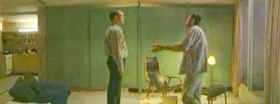
Win, Place or Show (clip) (1998, 1.6 MB, 47 sec.)
Two men are having a discussion in a small apartment. The scene,
lasting only six minutes, is filmed from twenty camera positions.
A computer program then produces some 200,000 possible combinations
of images and sounds, so the viewer always sees a different version of the story.
Win, Place or Show questions our conditioned viewing behaviour.
video installation by Stan Douglas.
from ZKM Videosammlung.
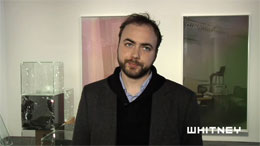
Walead Beshty – Whitney Focus (2008, 25 MB, 2:18 min)
2008 Whitney Biennial artist Walead Beshty discusses his photographs
of the former Iraqi embassy to the former East Germany (two nations that no longer exist)
and the complex ideas behind them. He also explains why his glass sculptures
have acquired multiple cracks and fissures.
Produced by the Whitney Museum.
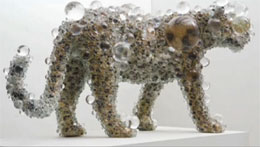
Interview with Kohei Nawa (2010, 50 MB, 4:32 min)
Studio Banana TV interviews Japanese artist Kohei Nawa
best known for his ideas of
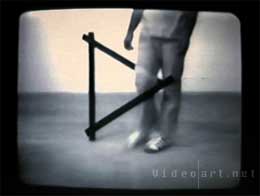
videoconstructions2 (1978, 5MB, 1:16 min.)
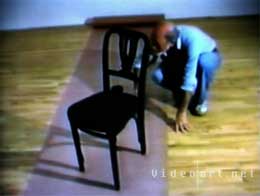
The Chair (1980, 36MB, 9:54 min.)
Buky Schwartz (1932-2009), an Israeli sculptor and video artist
who passed away last year, was known for his deceptive videos
that interplay between illusory appearance and the actual ‘reality’.
The 2 vids here were exhibited at the Whitney Biennial in New York in 1981.
From the splendid Videoart.net
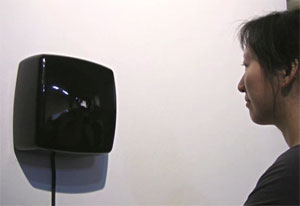
Opto-Isolator (2007, 6MB, 46 sec.)
“Opto-Isolator inverts the condition of spectatorship by exploring the questions:
“What if artworks could know how we were looking at them? And, given this
knowledge, how might they respond to us?” The sculpture presents a solitary
mechatronic blinking eye, at human scale, which responds to the gaze of visitors
with a variety of psychosocial eye-contact behaviors that are at once familiar and
unnerving. Among other forms of feedback, Opto-Isolator looks its viewer directly
in the eye; appears to intently study its viewer’s face; looks away coyly if it is stared
at for too long; and blinks precisely one second after its visitor blinks.”
By Golan Levin and Greg Baltus.
“Eyecode is an interactive installation whose display is wholly constructed
from its own history of being viewed. By means of a hidden camera, the system
records and replays brief video clips of its viewers’ eyes. Each clip is articulated
by the duration between two of the viewer’s blinks. The unnerving result is a
typographic tapestry of recursive observation.”
By Golan Levin.